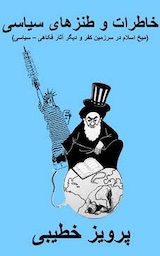Muscular diplomacy still offers the best set of tools to prevent Iran from developing nuclear weapons.
By Barbara Slavin
Stimson Center
The Problem
According to a November 2024 report by the International Atomic Energy Agency (IAEA), Iran had amassed more than 6000 kilograms of enriched uranium, including more than 180 kilograms enriched to 60 percent – perilously close to weapons grade. This supply is sufficient to develop fuel for several nuclear weapons in short order if Iran makes the political decision to do so. The growth in Iran’s stockpile follows the first Trump administration’s withdrawal in 2018 from the Joint Comprehensive Plan of Action (JCPOA), a UN Security Council-approved deal that would have limited Iran’s stockpile to less than 200 kilograms of low-enriched uranium until the year 2031.
Essential Context
Iran has one of the oldest nuclear programs in the Middle East, dating to 1957, when the Eisenhower administration signed a civil nuclear cooperation agreement with the government of Shah Mohammad Reza Pahlavi, a U.S. ally, under the ‘Atoms for Peace’ program. Western cooperation with Iran’s nuclear industry ended after the 1979 Islamic revolution; Iran’s Supreme Leader at the time, Ayatollah Ruhollah Khomeini, halted the country’s nuclear efforts but revived them in the mid 1980s during the Iran-Iraq war out of concern that Iraq was developing nuclear weapons. With assistance from China, Pakistan, and Russia, Iran slowly expanded its work. Enrichment-related facilities undeclared to the IAEA were revealed in 2002. The following year, according to the CIA, Iran abandoned a structured weapons research program but continued civilian development.
In 2015, under the JCPOA, Iran agreed to strict limits on its nuclear program and stringent monitoring by the IAEA. However, after the Trump withdrawal in 2018 and the Israeli assassination of a prominent Iranian nuclear scientist in 2020, Iran began to enrich uranium to 20 percent purity and to limit IAEA scrutiny. Iran retaliated for an Israeli sabotage operation against Iran’s main enrichment facility at Natanz in 2021 with a decision to begin enriching uranium to 60 percent.
Efforts by the Biden administration to revive the JCPOA failed for a variety of reasons, among them an unrealistic demand for a “longer and stronger” deal, a change in Iranian presidents in the summer of 2021, Iran’s demands for guarantees on the sustainability of sanctions relief and decreasing cooperation from Russia after its full-scale invasion of Ukraine in February 2022. A minor de-escalatory understanding was reached with the U.S. in September 2023 under which Iran agreed to slow its accumulation of 60 percent uranium and not to install any additional advanced centrifuges. In addition, Iran released five U.S. dual nationals in return for unfreezing $6 billion in Iranian oil revenues in South Korean banks to be used only to purchase non-sanctioned humanitarian goods. But the outbreak of the Gaza war the following month and regional escalation including direct strikes on Iran by Israel and vice versa have left the international community scrambling to find a new approach to address the nuclear problem.
Policy Recommendations
Tighten enforcement to draw Iran back into negotiations. The incoming Trump administration has already made it clear that it intends to rachet up economic pressure on Iran by diminishing its ability to export oil. In the short term, this ‘maximum pressure 2.0’ stance may achieve some results, but Iran has mastered new circumvention skills and many of the small Chinese ‘teapot’ refineries that purchase Iranian oil are impervious to U.S. sanctions. A better approach would be to use the threat of tighter enforcement as leverage to get Iran back into negotiations on rolling back its production of 60 percent enriched uranium in a verifiable manner.
Encourage transparency and cooperation with IAEA. Work with the IAEA to improve transparency about the Iranian nuclear program. IAEA Director General Rafael Grossi visited Iran in November for the first time in many months to tackle the monitoring question as well as other outstanding issues regarding past Iranian nuclear work. The Trump administration should make it clear that better cooperation with the IAEA and an Iranian decision to improve IAEA access to facilities and knowledge about past nuclear work would have a positive impact on U.S. willingness to negotiate a deal with Iran and provide sanctions relief.
Host official – and direct — talks to explore a new nuclear agreement. Reach out to Iranian officials for exploratory talks about a new nuclear agreement. Before the U.S. election, Iran already contacted individuals who worked in the prior Trump administration on Middle East issues to begin to gauge what U.S. policy toward Iran might be in a second Trump term. These contacts should continue. Talks can take place in Oman, a traditional mediator, Qatar, which facilitated the last U.S.-Iran mini-deal in 2023, Vienna, Geneva or New York. Ideally, the discussions should be direct and not via third parties to minimize misunderstandings.
Build a “Trump Plan of Action”. Propose a realistic schedule of increased monitoring, concrete nuclear rollbacks and sanctions relief, including unfreezing of Iranian oil revenues still stuck in foreign banks for trade in food and medicine. It is unrealistic to restore the original JCPOA given how many deadlines specified in the agreement have already expired. Iran is unlikely to accept the old limitations on stockpiles and centrifuges but could take actions that would substantially increase the time it would take to produce a bomb’s worth of fuel from the current “breakout” period of only a few days to several months. Any new deal could be dubbed the “Trump Plan of Action” rather than JCPOA 2.0 and its architects could suggest that Trump could win a Nobel prize for achieving it – indeed, this could be the President-elect’s “Nixon to China” moment.
Put regional security issues on the agenda. Expand the agenda to regional issues, encouraging Iran not to respond to the latest Israeli missile strikes on Iran. Iran should also be urged to reduce support to its already battered allies in the ‘Axis of Resistance’ and to adopt a more constructive and peaceful approach to assisting Palestinians, including formal acceptance of a two-state solution. It would help if the Trump administration does not immediately rubber stamp potential Israeli moves to formally annex the West Bank and resettle Gaza.
Engage Arab allies on a new Iran policy. Listen to U.S. Arab allies as much or more than Israel when it comes to Iran policy. When Trump was last in office, powerful Arab countries such as Saudi Arabia and the United Arab Emirates cheered his decision to quit the JCPOA and resume sanctions on Iran. Their enthusiasm cooled when Iran responded by attacking Arab targets such as a major Saudi oil refining complex and Trump did not come to Arab allies’ defense. Partly as a result, the Emiratis and the Saudis have patched up relations with Iran and are not looking for a new U.S.-Iran or Israel-Iran confrontation that would further destabilize the region and negatively impact their ambitious economic development plans.
Reach durable cease-fires in Gaza and Lebanon. Reaching a credible ceasefire in these areas will reduce pressure on Iran to continue to support Hamas and Hezbollah and allow the Houthis to stop attacks on commercial shipping in the Red Sea. Give Iran a seat at the table at international conferences about relief and reconstruction for Gaza and Lebanon.
Seek an end to cyberattacks and assassination plots. Iran reportedly sought to interfere in U.S. elections through hacking Trump-related accounts and the U.S. Justice Department recently brought charges against three individuals said to have been involved in plots to kill Trump in retaliation for the U.S. assassination of prominent Iranian general Qassem Soleimani in 2020 in Baghdad. It is hard to negotiate with a country that is engaged in such actions but for the sake of regional peace, it is imperative that Washington and Tehran make a concerted effort to do so.
Downplay the “military option.” Continue to advise Israel not to bomb Iranian nuclear facilities and do not provide Israel with the ordinance necessary to hit deeply buried sites. It is too late to destroy Iran’s nuclear program through military action and indeed, military strikes are likely only to further incentivize Iran to quit the nuclear Non-Proliferation Treaty and build weapons. Only diplomacy has succeeded in rolling back the program in the past and muscular diplomacy remains the best option to convince Iran not to cross the nuclear weapons threshold.










Comments